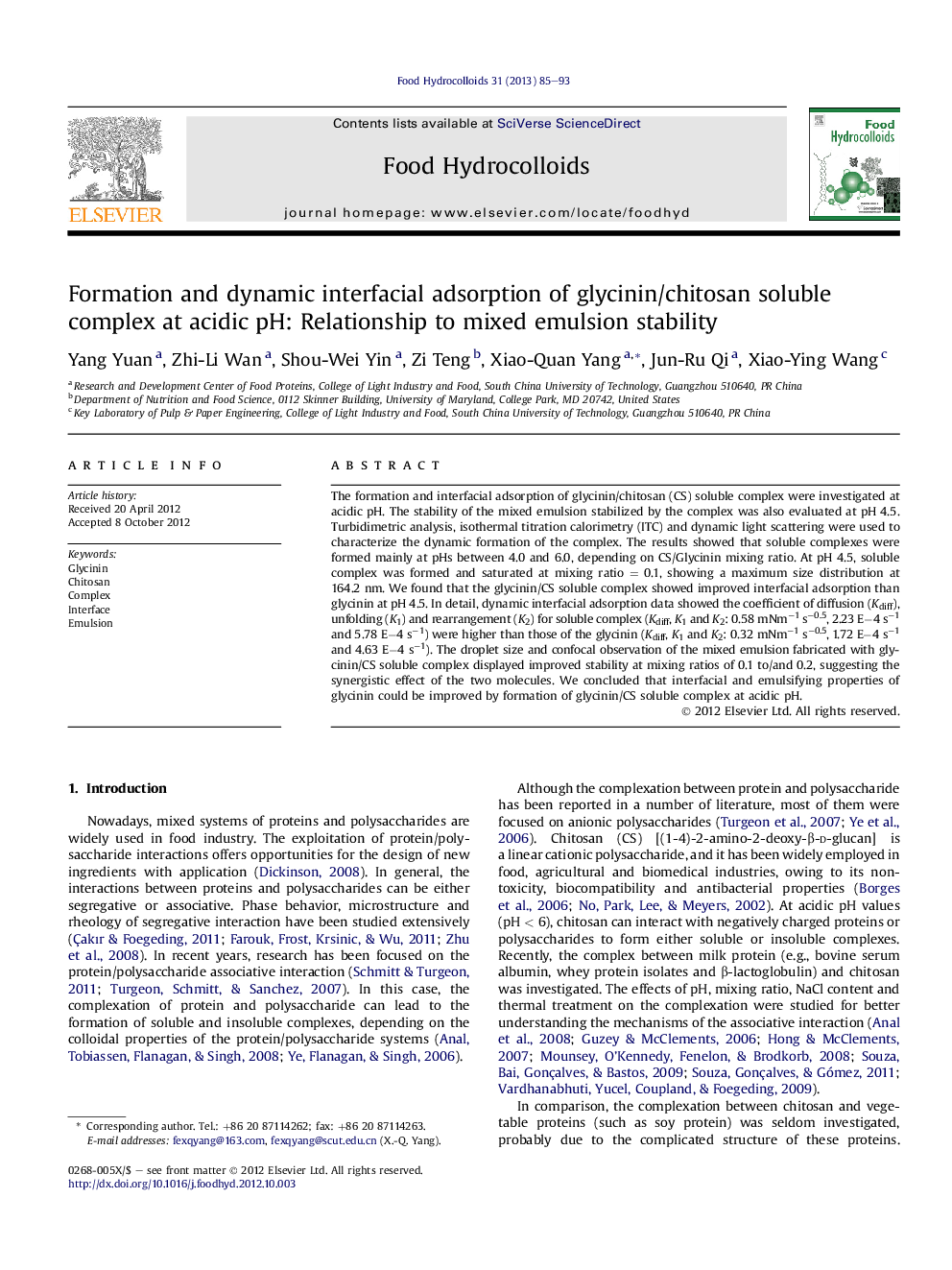| Article ID | Journal | Published Year | Pages | File Type |
|---|---|---|---|---|
| 605553 | Food Hydrocolloids | 2013 | 9 Pages |
The formation and interfacial adsorption of glycinin/chitosan (CS) soluble complex were investigated at acidic pH. The stability of the mixed emulsion stabilized by the complex was also evaluated at pH 4.5. Turbidimetric analysis, isothermal titration calorimetry (ITC) and dynamic light scattering were used to characterize the dynamic formation of the complex. The results showed that soluble complexes were formed mainly at pHs between 4.0 and 6.0, depending on CS/Glycinin mixing ratio. At pH 4.5, soluble complex was formed and saturated at mixing ratio = 0.1, showing a maximum size distribution at 164.2 nm. We found that the glycinin/CS soluble complex showed improved interfacial adsorption than glycinin at pH 4.5. In detail, dynamic interfacial adsorption data showed the coefficient of diffusion (Kdiff), unfolding (K1) and rearrangement (K2) for soluble complex (Kdiff, K1 and K2: 0.58 mNm−1 s−0.5, 2.23 E−4 s−1 and 5.78 E−4 s−1) were higher than those of the glycinin (Kdiff, K1 and K2: 0.32 mNm−1 s−0.5, 1.72 E−4 s−1 and 4.63 E−4 s−1). The droplet size and confocal observation of the mixed emulsion fabricated with glycinin/CS soluble complex displayed improved stability at mixing ratios of 0.1 to/and 0.2, suggesting the synergistic effect of the two molecules. We concluded that interfacial and emulsifying properties of glycinin could be improved by formation of glycinin/CS soluble complex at acidic pH.
Graphical abstractLeft: Schematic representation of glycinin/chitosan mixture at oil–water interface; Middle: The coefficient of interfacial diffusion, unfolding and rearrangement of glycinin/chitosan mixture at pH 4.5; Right: The confocal observation of glycinin/chitosan mixed emulsion at pH 4.5 (A: Glycinin, B: Glycinin/chitosan soluble complex, C: Soluble complex with excessive chitosan). The photographs were plotted by Yang Yuan et al. Figure optionsDownload full-size imageDownload as PowerPoint slideHighlights► The formation of glycinin/chitosan soluble complex was electrostatic dependent. ► At pH 4.5, soluble complex saturated at chitosan/glycinin mixing ratio of 0.1. ► The soluble complex showed improved interfacial adsorption than glycinin at pH 4.5. ► The mixed emulsion stability enhanced at mixing ratio when soluble complex formed.
